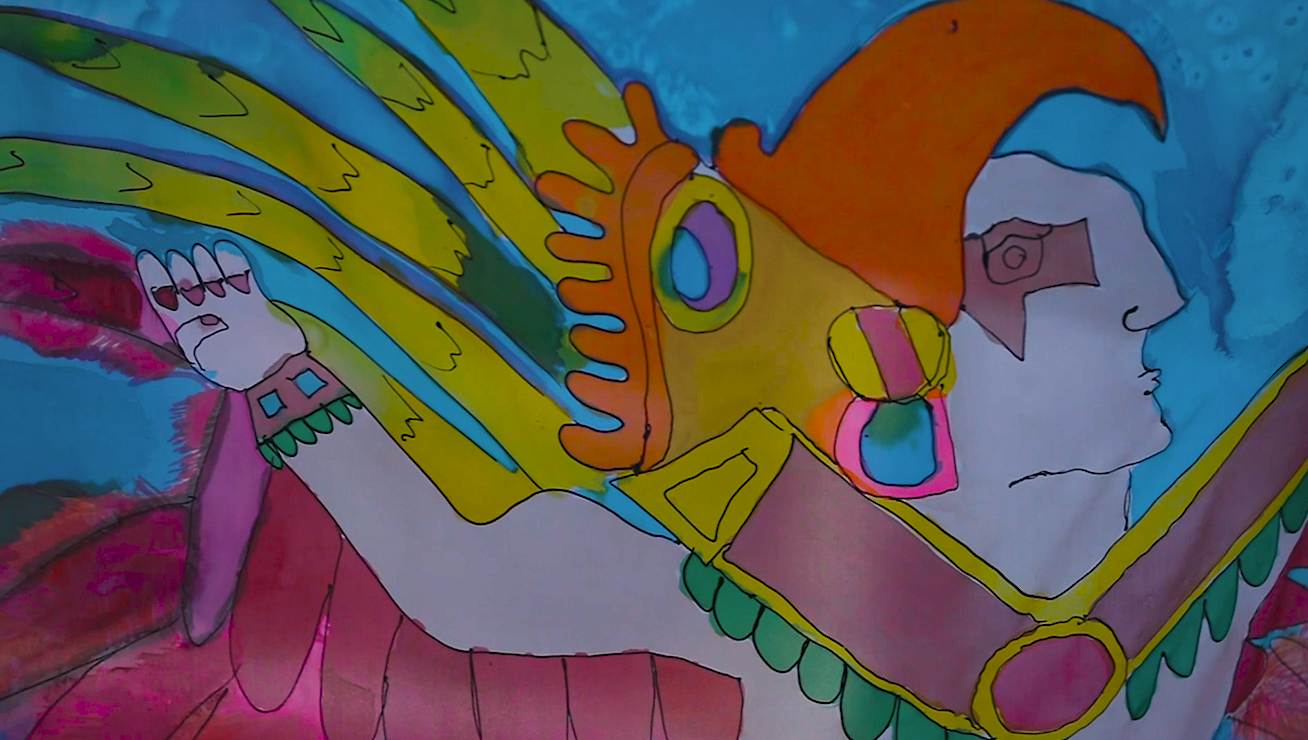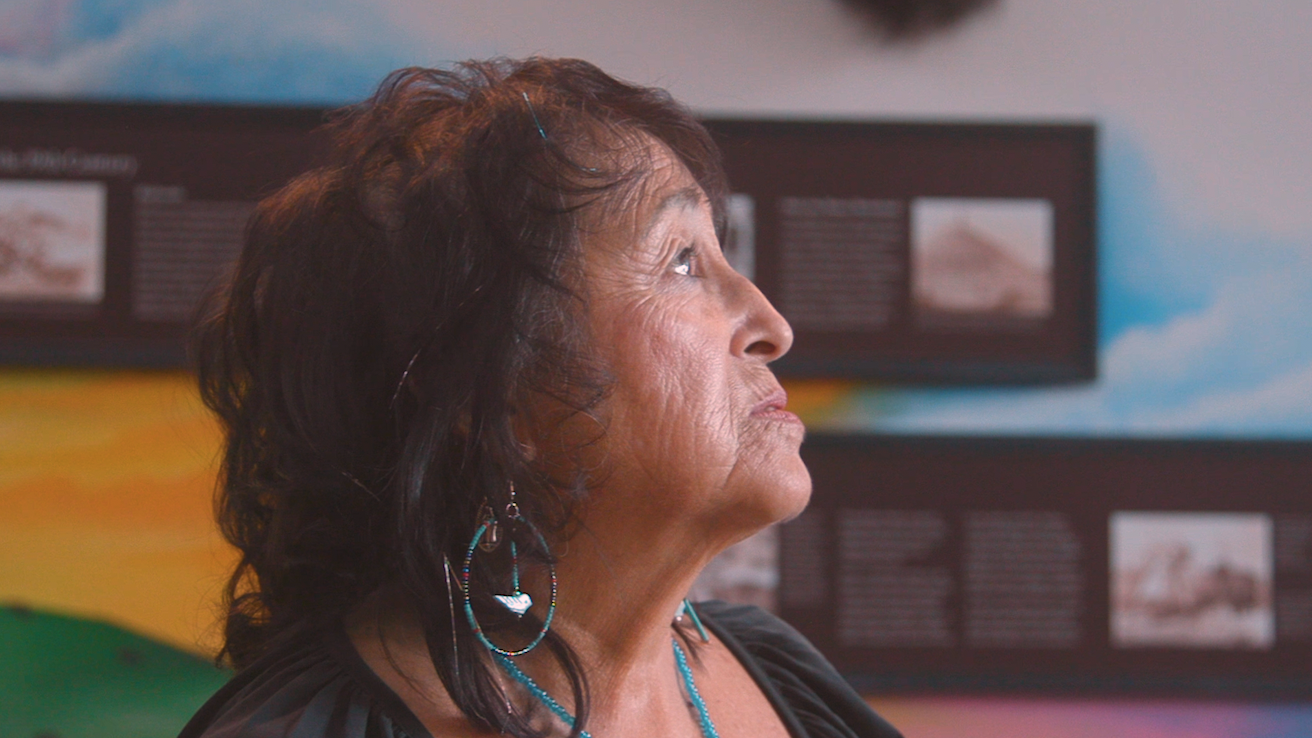Artists unite to create silk murals honoring water in, and beyond, Colorado

PUEBLO, Co. — “Todos somos protectores del agua.”
We are all protectors of water.
That sense of shared responsibility, along with increasing appreciation and understanding of the cultural and natural significance of water, is what artist Belilnda Garcia hopes to capture in her silk mural “Somos Agua.”
The piece, which combines five different silk panels stretching as long as 60 feet, was realized by more than 100 artists from across the state and are on exhibit at the El Pueblo History Museum in Pueblo.
Visitors can walk below the murals, which hang from the ceiling of the museum, rippling from the fans above.
“‘What is your connection to water?’ We all have different answers,” said Garcia, “That’s what I hope people ask when they see this mural.”
Garcia is a retired art teacher from Crestone, a small town nestled in the San Luis Valley, one area among many in Southern Colorado that have faced challenges accessing water.
Crestone’s water scarcity, the area’s multicultural perspectives on water and contemporary feuds over water access — most notably the Standing Rock Sioux tribe’s 2017 protest of the Dakota Access Pipeline in North Dakota — inspired Garcia to initiate an art project aimed at bolstering a social consciousness around water issues.
In addition to a focus on the importance of water, Garcia hoped this would be a therapeutic and unifying effort.
“I had just completed a workshop about historical trauma, and so when I started Somos Agua, I had that in mind… about healing and about bringing communities together,” said Garcia.
She first applied for a grant to initiate the project in 2017, which helped fund the first of the silk murals. Titled “Protect The Water”, it was made in honor of the Water Protectors of Standing Rock in North and South Dakota.
“Protect The Water” was completed in Saguache, Colorado, by students and adults from Center, Crestone, and Saguache, all under the leadership of Garcia.
Over the next four years, participants including members of the Jeffco Indian Education, the International Indigenous Youth Council and resident artists from Colorado, California, Hawaii, Mexico and Honduras, all contributed to the murals.

Figures symbolic of a diverse array of cultures fill the silk murals.
Photo: Chase McCleary, Rocky Mountain PBS
“Growing up, I always thought murals were supposed to be a teaching tool, and for people that don’t have voices,” said Garcia. “And so a majority of the people [working on the project] were people of color.”
The second mural, titled “Mni Wiconi,” which translates to “Water is Life” from Lakota, was heavily influenced by various youth Indigenous groups in the Denver and Aurora areas. Depictions of various Native American figures and symbols, along with modern-day protestors battling contemporary water issues, provide a form of a therapy for both the viewer and the creators, said Garcia.
Other murals include Native American legends intermixed with sea and land animals, real and mythical, traversing the silk. The first two murals stretch over sixty feet long and six feet wide, and the others reach about 40 feet each.
Every inch pops with bright pinks, fiery oranges, and deep blues.
Artists from as young as four years old to eighty-four all contributed to the panels, according to Garcia.
Each mural was made independently of the others, and artists were only given the chance to see the other pieces after their work was finished. This allowed for more creative and personal expression, said Garcia, giving each mural its own distinctive themes and meanings.
Throughout the process, Garcia documented the efforts and stories of the artists into a collection of digital shorts.
Garcia recently published a book titled, “Somos Agua” which provides a more in-depth look at the project, some of these artists, their stories and how those are reflected in their work on the murals.
She noted the amount of healing that appeared to take place throughout the making of the five murals, and Garcia hopes that visitors will appreciate this as much as the artists did themselves.
“I want [visitors] to have a spiritual experience,” said Garcia. “And I still do. It brings tears to my eyes because I saw people grow through this.”

Garcia described the exhibition as “a spiritual experience.”
Photo: Chase McCleary, Rocky Mountain PBS
Somos Agua is intended to be a moving exhibition, said Garcia, and all five silk murals are scheduled to show at the University of Colorado, Denver later this year.
Garcia said she is currently in the process of arranging a showing for Somos Agua in Washington D.C.
In the meantime, she hopes the exhibition continues to inspire visitors as well as represent a transformative accomplishment between artists from across an array of cultures.
“...[the contributing artists] are artists because they create. And that’s what we need to do, is hold each other up and support each other,” said Garcia.
“You do things that make us feel good about ourselves because when we feel good about ourselves, we can be kind to other people.”
Chase McCLeary is a multimedia journalist at Rocky Mountain PBS. Chasemcleary@rmpbs.org.